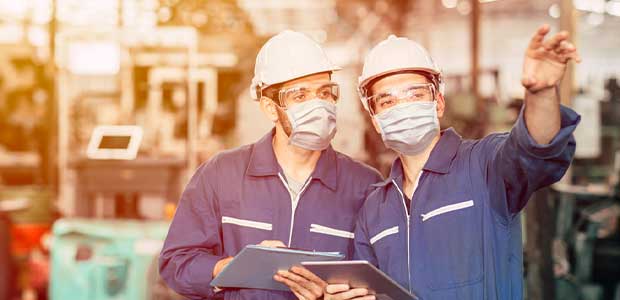
Industrial Hygiene: Yesterday, Today & Tomorrow
A lot has changed in industrial hygiene, but one thing is constant: the need for worker health and safety.
- By Alex Saurman
- Sep 01, 2022
Every workplace has hazards that affect all employees and potentially put their lives at risk. When employees are exposed to these hazards without the right protection, it can lead to injury, illness or death. So how do employers identify these hazards and mitigate the potential for injury? That’s where an industrial hygienist can help.
In a detailed explanation, OSHA states “industrial hygienists use environmental monitoring and analytical methods to detect the extent of worker exposure and employ engineering, work practice controls, and other methods to control potential health hazards.” The role of an industrial hygienist is to identify hazards and provide suggestions to mitigate the risks. They play an essential role in helping employers reduce the number of injuries and illnesses on the worksite.
This coverage for our 90th anniversary will focus on the history of industrial hygiene, including where it is now and where some see it going.
The Past
The history of industrial hygiene dates back to the fourth century BC when Hippocrates, a Greek physician, was one of the earliest people to mention worksite hazards. He cited “lead toxicity in the mining industry.”
As centuries continued, others would identify and discuss various hazards in mining settings. In the second century AD, acid mists in copper mines were identified as a hazard by Galen, another Greek physician. In 1556, Agricola published a book, “De Re Metallica,” on miner occupational diseases. His book outlined suggestions to keep workers safe, such ventilation and protection. In 1743, Ulrich Ellenborg published a document on gold miners. The pamphlet addressed occupational diseases for these miners, including the potential toxicity of certain materials, including lead.
In 1700, Bernardo Ramazzini published “De Morbis Artificum Diatriba” (The Diseases of Workmen) that addressed multiple occupations, not just one. According to OSHA, “Ramazzini greatly affected the future of industrial hygiene because he asserted that occupational diseases should be studied in the work environment rather than in hospital wards.”
In the 20th century in the United States, Dr. Alice Hamilton told many professionals about “evidence that there was a correlation between worker illness and exposure to toxins” and “presented definitive proposals for eliminating unhealthful working conditions.”
This article originally appeared in the September 1, 2022 issue of Occupational Health & Safety.